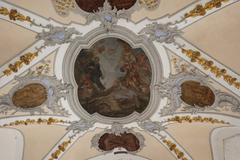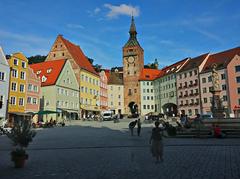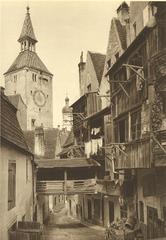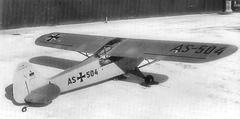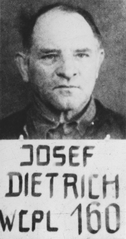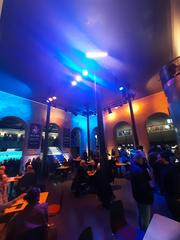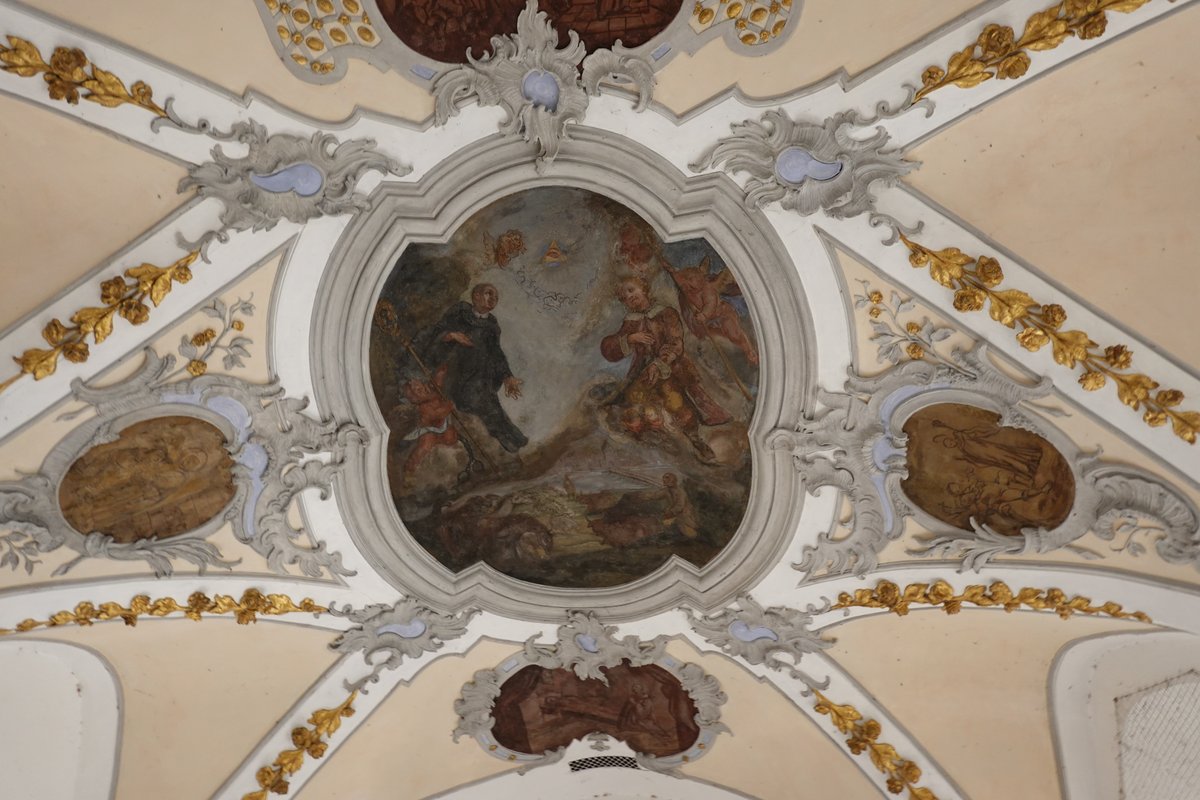
Landsberg am Lech Visiting Guide: Opening Hours, Tickets, and Attractions
Date: 14/06/2025
Introduction
Nestled in the Lech Valley of Bavaria, Landsberg am Lech is a picturesque town celebrated for its medieval and baroque architecture, vibrant cultural life, and layered history. Located about 60 kilometers west of Munich, Landsberg boasts well-preserved landmarks such as the iconic Bayertor (Bavarian Gate), Gothic and Baroque churches, and a historic town hall adorned by Dominikus Zimmermann. The town’s history spans from Neolithic settlements to its medieval rise as a trade hub, through war and 20th-century upheavals, including significant events during WWII. Today, Landsberg am Lech offers a rich tapestry of experiences—from exploring historic streets and museums to participating in local festivals. With practical visitor information on hours, tickets, and accessibility, this guide will help you make the most of your visit. For more details, see Landsberg am Lech Historical Overview and Visitor Guide and Cultural Significance and Visitor Guide to Landsberg am Lech.
Table of Contents
- Introduction
- Early Settlement and Medieval Foundations
- City Rights, Expansion, and Strategic Importance
- Religious and Architectural Heritage
- Landsberg in the Early Modern Era
- The 20th Century: Dark Chapters and Renewal
- Visiting Landsberg am Lech: Practical Information
- Cultural Significance and Contemporary Life
- Top Historical Sites and Attractions: Hours and Tickets
- Practical Tips, Dining, Accommodation, and Day Trips
- Events and Responsible Tourism
- Frequently Asked Questions (FAQs)
- Visuals and Media
- Conclusion and Recommendations
- References
Early Settlement and Medieval Foundations
Archaeological finds indicate the Lech Valley has been inhabited since at least 3500 BC (tourismus-landsberg-ammersee-lech.de). Early settlers established themselves on Schlossberg around 1700 BC. The first documented reference to a settlement, Phetine, dates to approximately 1135. Strategically positioned at a Lech River crossing, the area flourished after Duke Henry the Lion rerouted the salt road in 1158, building a bridge and the fortified “Castrum Landespurch.” This protection spurred rapid growth, leading to the emergence of “Landesperch,” the medieval forerunner of modern Landsberg am Lech (adriandamian.medium.com).
City Rights, Expansion, and Strategic Importance
Landsberg was first mentioned as a city in 1279. Its location at the crossroads of trade and the Lech River cemented its economic and strategic relevance. After being destroyed in 1315 during regional conflicts, it was rebuilt with ducal support. The city thrived in the 14th and 15th centuries, gaining rights to levy taxes and expanding its fortifications. The construction of the Bayertor in 1425, now a symbol of Landsberg, exemplifies the era’s prosperity and defensive needs (tourismus-landsberg-ammersee-lech.de).
Religious and Architectural Heritage
The late Middle Ages and Renaissance saw the rise of significant religious and civic buildings. The Parish Church of the Assumption of the Virgin Mary was built between 1458 and 1488, blending Gothic and Baroque elements and serving as a venue for major cultural events like the annual Landsberger Orgelsommer (kulturinlandsberg.de). The Historic Town Hall, designed by Dominikus Zimmermann, and the medieval street layout with colorful facades and city gates, make Landsberg a highlight on the Romantic Road (tourismus-landsberg-ammersee-lech.de).
Landsberg in the Early Modern Era
The Thirty Years’ War brought hardship, but Landsberg retained its role as a market and administrative center. Integration into the Kingdom of Bavaria in the 19th century spurred modernization and fostered an active artistic community.
The 20th Century: Dark Chapters and Renewal
Landsberg’s recent history is marked by both tragedy and transformation. Adolf Hitler was imprisoned here in 1924, writing part of “Mein Kampf” (adriandamian.medium.com). During WWII, the region hosted one of the largest complexes of Dachau subcamps, where thousands perished (landsberg-kaufering-erinnern.de). Today, memorials and educational sites ensure remembrance and reflection.
Visiting Landsberg am Lech: Practical Information
Visiting Hours and Tickets
- Bayertor & Old Town: Open access year-round; free.
- Herkomer Museum: Wed–Sun, 11:00 AM–4:00 PM. Tickets: €6 adults, reduced for students/groups.
- Mutterturm: Tues–Sun, 10:00 AM–5:00 PM. Tickets: €5 adults, €3 concessions.
- Neues Stadtmuseum: Generally 10:00 AM–5:00 PM; check for variations.
- St. John’s Church: Daily, 9:00 AM–6:00 PM; free.
- Guided Tours: April–October; book at tourist office or online.
Getting There and Accessibility
- By Train: Direct regional trains from Munich and Augsburg; 50–60 minutes from Munich Hauptbahnhof.
- By Car: Via A96 motorway; ample parking near the old town (Outdooractive).
- Public Transport: Local buses connect town and surroundings.
- Accessibility: Main attractions have ramps or lifts; cobblestones may challenge some visitors—contact sites for details.
Accommodation
Options range from boutique hotels in historic buildings to family-run guesthouses, all within easy reach of the old town. Book early during festivals or peak season.
Nearby Attractions
- Augsburg: Renaissance and Roman heritage (36 km).
- Wieskirche: UNESCO-listed baroque church in Steingaden (38 km).
- Ottobeuren Abbey: Baroque masterpiece (45 km).
- Ammersee Lake: Nature, watersports, and day trips.
Cultural Significance and Contemporary Life
Medieval and Baroque Heritage
The old town features landmarks like the Bayertor and Schmalzturm, as well as the richly decorated town hall (Bavaria Travel). Churches such as St. Mary of the Ascension and St. John’s blend gothic and baroque styles (Romantische Straße).
Festivals and Events
- Ruethenfest (every 4 years; next in 2027): Historical children’s festival (Landsberg.de).
- Bayertorfest (2025): Celebrating 600 years of Bayertor.
- Lange Kunstnacht: Biennial citywide art night.
- Christmas Market: Seasonal crafts and cuisine (Romantische Straße).
Artistic Life
Museums like the Neues Stadtmuseum and Herkomer Museum showcase local art and history. Unique features include an art vending machine dispensing miniature artworks (Bavaria Travel). The town’s theaters host concerts and plays, often with international artists (Medium).
Community and Diversity
Landsberg’s population of 28,000 is known for inclusivity and high civic engagement, with active participation in local governance and sustainability initiatives (Explore City Life).
Culinary Scene
Sample Bavarian classics at local beer gardens like Fischerwirt and international fare at cafés such as Café Markita along the Lech Promenade (Bavaria Travel).
Nature and Recreation
The Lech River, Lechwehr, and Pössinger Au wildlife park offer scenic walks, kayaking, and wildlife spotting (Bavaria Travel). The Teufelsküche rock formations are a favorite for family hikes.
The Romantic Road
Landsberg is a key stop on the Romantic Road, linking it to other historic towns and castles (Romantische Straße).
Top Historical Sites and Attractions
- Hauptplatz (Main Square): Open year-round; heart of the town (TheEuroRoadTrip.eu).
- Schmalzturm: Iconic medieval tower.
- Lechwehr: Scenic river waterfalls; open access.
- Landsberg Prison (exterior): Historic WWII site (The JC).
- Kaufering Concentration Camp Sites: Memorials and trails for remembrance (landsberg-kaufering-erinnern.de).
Practical Tips, Dining, and Day Trips
- Language: German is official; English widely spoken in tourist areas.
- Currency: Euro (€); cash recommended for small purchases.
- Best Time to Visit: May–September for mild weather; festivals are highlights.
- Safety: Very safe; observe respect at memorials.
- Guided Tours: Available in multiple languages—contact tourist office.
Events and Responsible Tourism
Attend local festivals, open-air concerts, and Christmas markets. Approach memorial sites with sensitivity and support ongoing remembrance efforts.
Frequently Asked Questions (FAQs)
Q: What are typical visiting hours for attractions?
A: Most are open 10:00 AM–5:00 PM, with seasonal variations.
Q: Are tickets required?
A: Many outdoor sites are free; museums and special tours require tickets.
Q: Is the town accessible for visitors with disabilities?
A: Many main sites have accessibility features, though cobblestones may be challenging.
Q: How can I get to Landsberg am Lech from Munich?
A: Regional train (50–60 minutes) or car via A96.
Q: Are guided tours available in English?
A: Yes; inquire at the tourist office.
Visuals and Media
Visitors are encouraged to explore virtual tours and interactive maps online. Official tourism resources offer high-quality images with alt tags such as “Landsberg am Lech visiting hours” and “Bavaria historical sites in Landsberg” for accessibility.
Conclusion and Recommendations
Landsberg am Lech exemplifies the best of Bavaria’s cultural and historical heritage—inviting visitors to journey through medieval streets, enjoy vibrant festivals, reflect at memorials, and savor local cuisine. Whether you’re a history enthusiast, art lover, or nature seeker, Landsberg promises a memorable stay. Check up-to-date hours, purchase tickets where needed, and consider guided tours to fully appreciate the town’s depth. Download the Audiala app for audio guides, and stay connected through our posts and social channels for the latest tips and updates.
References
- Landsberg am Lech Historical Overview and Visitor Guide (tourismus-landsberg-ammersee-lech.de)
- Cultural Significance and Visitor Guide to Landsberg am Lech (Medium)
- Visiting Landsberg am Lech: Hours, Tickets, and Top Historical Sites to Explore (The JC)
- Landsberg am Lech Cultural and Travel Information (Romantische Straße)
- Bavaria Travel: Landsberg am Lech River Sightseeing
- Landsberg Kaufering Erinnern
- Outdooractive: Landsberg am Lech Travel Guide
- TheEuroRoadTrip.eu: Sights in Landsberg am Lech
- Explore City Life: Landsberg am Lech
